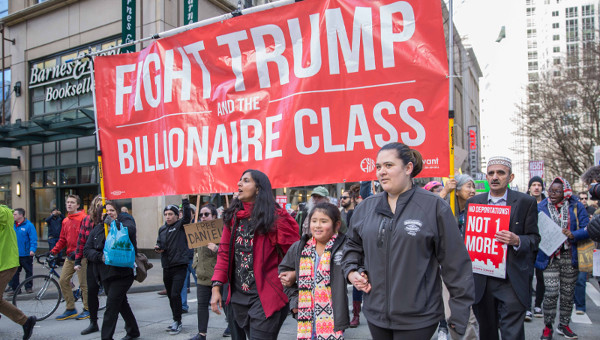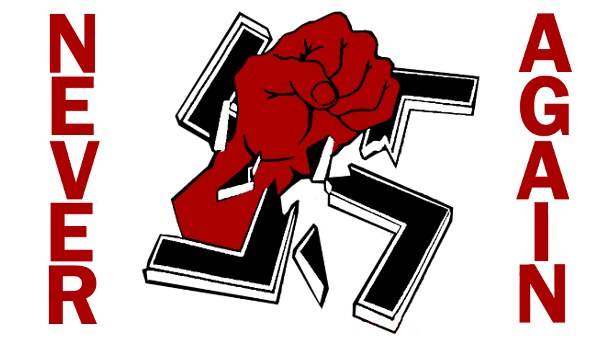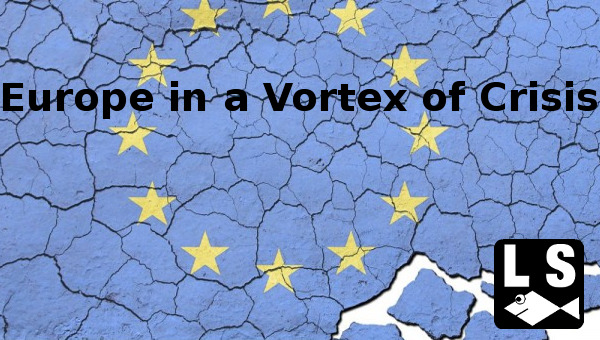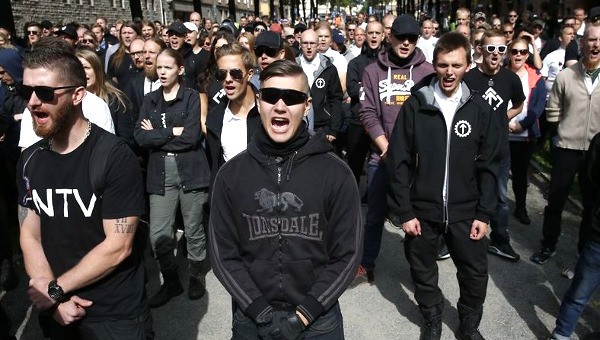Far Right Vigilantes Attack Land Defenders and Organized Workers
“Rule of Law” and Class Violence
Fascism is bare knuckle capitalism. A key element of fascist mobilizations is a fighting street force. Vigilantes ready and willing to attacked organized members of the working class, exploited, and oppressed. With fascism on the rise across many of the so-called Western liberal democracies, including Canada, we can see horrible manifestations of far Right vigilantism. And we can see how it is legitimated by mainstream conservatives, including elected members of governments. The street fighting groups are key parts of fascists terror to break resistance of the exploited and oppressed. And they operate with the approval of the formal parliamentary party wings.
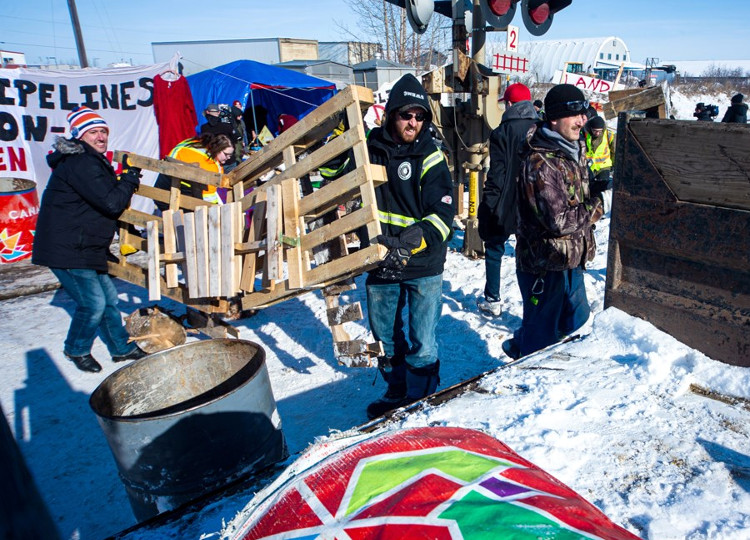
In the Canadian context we can see troubling manifestations of this far Right vigilantism moving specifically and openly to break the crucial struggles of the current moment – the Wet’suwet’en land defense, and solidarity actions, asserting Wet’suwet’en sovereignty against an invasion by RCMP in the service of the Coastal GasLink pipeline and the Unifor pickets of the Coop Refinery in Regina by locked out workers and supporters. These mobilizations now face a dual threat of formal state repression and criminalization by police (as politicians increasingly use terms like “illegal” to describe them) and informal vigilante violence, specifically by far Right and neofascist elements.
According to Barbara Perry, Criminology professor and hate crime researcher at the University of Ontario Institute of Technology, there are, at minimum, 130 active far Right extremist groups operating across Canada. Perry reports that this represents a 30 per cent increase from 2015. It becomes even more crucial for broader solidarity efforts to coalesce to defend these struggles against state and extra-state violence.
Far Right Vigilante Attacks
On Wednesday, February 19, 2020, far Right vigilantes set upon and tore down a blockade set up outside Edmonton by Indigenous people acting in solidarity with Wet’suwet’en land defenders. At Edmonton, RCMP, who they and politicians say are sent to the blockades as matters of “public safety,” notably stood by while the far Rightists confronted the solidarity blockaders and took down the blockades. It is important to point out, in the context of rule of law narratives, that no injunction had been served against the blockaders at the time the far right vigilantes assailed the blockade. They were not breaking the law.
Those who put out calls to dismantle blockades and those who showed up claimed openly to be involved with far Right groups including the Yellow Vests Canada (YVC) and wexit (western Canada exit movement), and involved people who were part of the United We Roll (UWR) mobilization on Parliament Hill last year. These are groups that have been identified as far Right, extremist hate groups and have been associated with neofascism in Canada.
In an interview with Huffington Post, McMaster University Professor Ameil Joseph, whose work focuses on race theory, immigration and mental health, identified United We Roll as “a revisioned white nationalist, white supremacist movement.”
The attack on land defenders near Edmonton was not an isolated event. It is one of several far Right assaults on working class communities recently. And we need to make the connections and look at these together as aspects of class violence.
On Wednesday, February 5, 2020, far Rightists identifying with United We Roll and Yellow Vest Canada rallied against the secondary picket line in Carsland, Alberta, set up by Unifor workers in support of locked out workers at the Coop Refinery in Regina. In an interview with rankandfile.ca a Unifor worker noted the anti-union stance of the Yellow Vests (despite their claim to be for resource workers) “They basically said if we weren’t part of Unifor, then they could back us. But because we’re part of a union, we’re part of the problem.” Hatred of organized labour is, of course, classic part of fascist movements, a key part of their orientation.
Derek Emperingham, a refinery worker and shop steward with Unifor 594, identified the role of the far Rightists in defending capital, not workers, in an interview with rankandfile.ca: “Who do they actually stand for? Do they stand for the middle class oil field workers? Cause from what we say, they stand for the corporation, and to help knock the middle class down.”
And the company took note. Federated Co-operatives Ltd. CEO Scott Banda positively referenced the presence of United We Roll and was thanked for the attention by UWR organizer Haley Wile. CEO Banda’s cheer came only days after a UWR member had threatened to run over Unifor picketers in a Facebook post.
To these actions by the far Right against Indigenous land defenders and unionized workers, we should also add previous attempts by neofascists to attack tent cities organized by homeless people. In 2018 the Soldiers of Odin (SOO) mobilized confrontations and attempted assaults against homeless people on multiple occasions in Nanaimo, British Columbia, a small, historically blue collar city, now university town.
In each of these cases police (RCMP at the Unifor picket and RCMP again at the Edmonton rail blockade) stood back and allowed the far Right vigilantes to assail blockaders and picketers. In Nanaimo, community activists organized self defense to keep the fascists at bay.
Far from being simply fringe elements, far Right mobilizations like United We Roll have been openly embraced by Conservative Party of Canada (CPC) members, including the current CPC leader Andrew Scheer. We might recall that Scheer, along with leader of the newfound alt-Right Peoples Party of Canada (and former Conservative Party member and leadership hopeful) Maxime Bernier, high ranking Conservative Member of parliament, Pierre Poilievre and Conservative Senator David Tkachuk appeared at the United We Roll rally on Parliament Hill last year. Scheer went a step beyond and even got into one of the trucks with a United We Roll slogan on the side. Ontario Premier Doug Ford also gave supportive public messages to the Yellow Vest convoy along the way, as did United Conservative Party of Alberta leader, and now Alberta Premier, Jason Kenney.
The Violent Underside of “Rule of law”
It is telling how quickly and easily “rule of law” politicians slip into cheerleaders for vigilante aggression by far Rightists. Conservative Party leadership candidate Peter MacKay, who had earlier made statements using rule of law assertions to condemn Wet’suwet’en and defenders and allies acting against the CoastalGaslink pipeline and RCMP occupation of Wet’suwete’en territory, quickly took to social media to cheer on the far right vigilante assault on the Cuzzins for Wet’suwet’en blockade. In a since deleted tweet he shouted out almost gleeful support for vigilante violence: “Glad to see a couple Albertans with a pickup truck can do more for our economy in an afternoon than Justin Trudeau could do in four years.” MacKay, it might be remembered served as Canada’s Justice Minister and Attorney General under former Prime Minister Stephen Harper.
Erin O’Toole, Conservative MP for Durham and announced candidate for leadership of the Conservative Party, asserted publicly that he would criminalize any act of blocking critical infrastructure, including railways. He would also give police the power to clear protesters without any injunction.
Alberta Justice Minister Doug Schweitzer used Twitter to amp up the rhetoric against peaceful land defenders, saying: “Albertans will not be economic hostages to law-breaking extremists.” Again, it must be stressed that the Cuzzins for Wet’suwet’en had broken no laws.
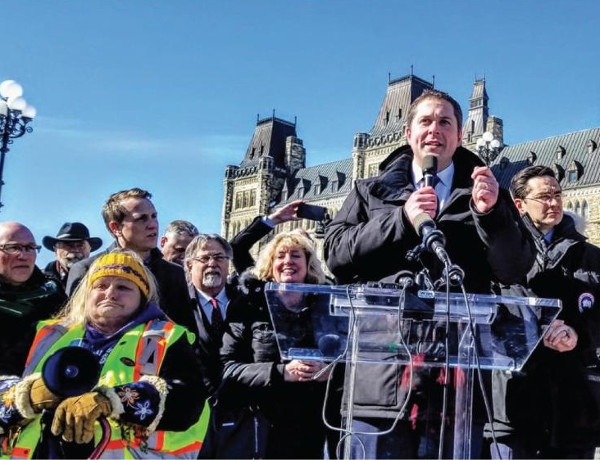 Marilyn Gladu, MP for Sarnia–Lambton, ramped things further by saying in an interview that the federal government should deploy the military to enforce court injunctions against land defenders if “the RCMP can’t handle it.”
Marilyn Gladu, MP for Sarnia–Lambton, ramped things further by saying in an interview that the federal government should deploy the military to enforce court injunctions against land defenders if “the RCMP can’t handle it.”
All of this came a week after Andrew Scheer had arrogantly told Indigenous land defenders to “check their privilege” and attempted to draw a distinction with “Canadians” who did not “have the luxury of spending days at a time at a blockade.” There were clear class and racist subtexts in that message, which were noted even by other politicians.
Of note, too, the far Right vigilantes view (or justify) their aggressions as being motivated by upholding the rule of law – in a context where the authorities simply lack the conviction to act. In a Huffington Post interview, Stéphane Leman-Langlois, co-director of the Observatory on Radicalization and Violent Extremism, noted: “These people think the state is too weak, too soft, and needs help imposing law and order. It is a classic discourse of the far-right.”
And the far Rightists are using it to mobilize.
“There’s the little ‘law and order’ sauce. These people like being on the side of law and order. And then there’s a crisis that demands urgent intervention. That’s exactly what it takes to mobilize these people.”
With help from mainstream conservative politicians.
Elected members of parliament who call for tough enforcement of rule of law and far Right vigilantes acting out that enforcement (even as it is outside rule of law) come together here. Their combined words and actions and acceptance of vigilante acts on behalf of rule of law, show clearly that the rule of law is not about the right, the good, the just, or social peace, as these would-be advocates claim. It is about one-sided imposition of (brute) force. On behalf of the state and corporate interests. On behalf of the status quo. On behalf, finally, of power.
And police reinforce this through discretionary decisions to allow reactionaries to attack peaceful dissenters. A far cry from the way in which police aggressively protect fascists from antifascists at far Right rallies and marches. And a far cry from the violence police inflict on those who oppose the state and corporations.
This is in no way a call for police action – police should not be at the blockades in the first place. Rather it is to note the disparity in police treatment of far Right vigilantes versus antifascists, progressive movements, and land defenders. And to highlight what police discretion in these cases say about the social role of police, and their role as defenders of status quo inequalities, and their views of “public safety.”
There are, of course, political effects of these outbursts by conservative members of parliament. As mainstream conservatives level accusations of “extremism” and “non-peaceful” at land defenders and trade unionists who are in fact acting on a peaceful basis, they create a climate that stokes fear and anger and positions land defenders and organized workers as threats needing to be pacified.
Far Right Vigilantes and State Repression: A Relationship
Law and order mainstream politicians and far right vigilantes have something of a symbiotic relationship. As I have written previously, based on my own experiences doing solidarity work with the Six Nations land reclamation at Caledonia, in multiple struggles by Indigenous people for land rights, governments at all levels in Canada have been happy to off-load the costs of crisis onto third parties, often local non-Indigenous residents in nearby towns, often explicitly reactionary groupings. In the case of Six Nations, there were anti-Indigenous rallies openly involving participation of neo-Nazis. Far Right provocateur Gary McHale infamously started a Caledonia Citizens Alliance agitating for aggressive action against Six Nations. As is the case currently in the vigilante actions against land defenders supporting Wet’suwet’en, governments can view these third party actions as positive in strategic terms.
We need to be clear that the racist, far Right, mobilizations play a political role that opens space for governments to deploy formal state violence. As I put it at the time of the Six Nations reclamation, the racist mobilization by groups like the Caledonia Citizens Alliance works to create a climate in which the most reactionary and militaristic politicians, at all levels of government can be emboldened to make aggressive and provocative statements against Indigenous land defenders. These groups also serve to escalate tensions and create the conditions that might clear the way for harder police, or even military, repression.
As James Lawson suggests “the high visibility of protest in many aboriginal land cases (just as with labour disputes) can mobilize the non-protesting third parties as a kind of spontaneous human shield for the status quo.” This can even be used by governments to claim cynically the excuse that heavier police or military action are needed to protect Indigenous people from the racists. Such was the situation during the Oka Crisis of 1990, when non-Indigenous residents engaged in several attacks on Mohawk people, including destroying food and an infamous attack on a convoy of vehicles evacuating women, children, and elderly people from Kahnawake by bridge.
Stéphane Leman-Langlois notes with regard to vigilante violence at Oka: “During the Oka crisis, there were many serious incidents before the army was called in. It really got out of hand.” And this provided a cover for state action.
Conclusion
The attack on the Edmonton blockade came as multiple calls have been put out by self-identified far Rightists on social media to show up and forcibly tear down various barricades set up in solidarity with Wet’suwet’en. In an interview with the Toronto Star Evan Balgord, a researcher with the Canadian Anti-Hate Network, reports that actions in solidarity with Wet’suwet’en land defenders, particularly rail and road blockades, have become the “number one topic of conversation” among fascist and far Right hate groups in online fora. And many of these discussions explicitly call for violence against land defenders.
Fascists are the shock troops of capital. So it is perhaps not surprising that we see far Right vigilantes targeting those they see as opposing extractives capital (oil and gas companies) in the context of a Canadian state deeply tied to extractives industries. As resistance to oil and gas capital increases and potentially spreads, connecting opposition among Indigenous land defenders, climate justice activists, and organized workers, it is likely that neofascists supportive of extractive capital, or using extractives industries as symbols of “Canadian nationalism” and “national development” (a term used by mainstream Liberal and Conservative party members it might be added), will focus their aggressions against those movements.
This has already been signalled by wexit campaigns and the United We Roll Canada mobilizations. Both use so-called Western alienation and calls for extractives projects as markers of nationalism with not so hidden elements of white supremacism (against Indigenous “opponents of development” and “foreign agitators” and the neofascist dog whistles of cosmopolitan urbanites/activists/hipsters).
The role of official political entities in fanning fascist flames must also be recognized and openly contested. Only collective organizing and self defense provide counters to all of this. Fascists fear collective organization of the exploited and oppressed for solidarity and social and economic justice. In the absence of organized solidarity, they see an open ground for organizing on an openly violent basis. •


